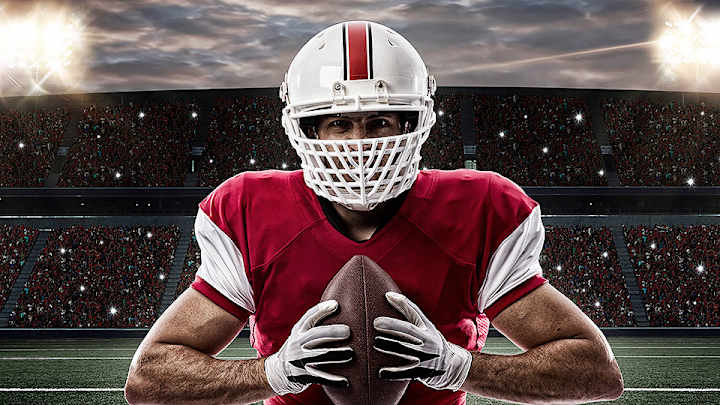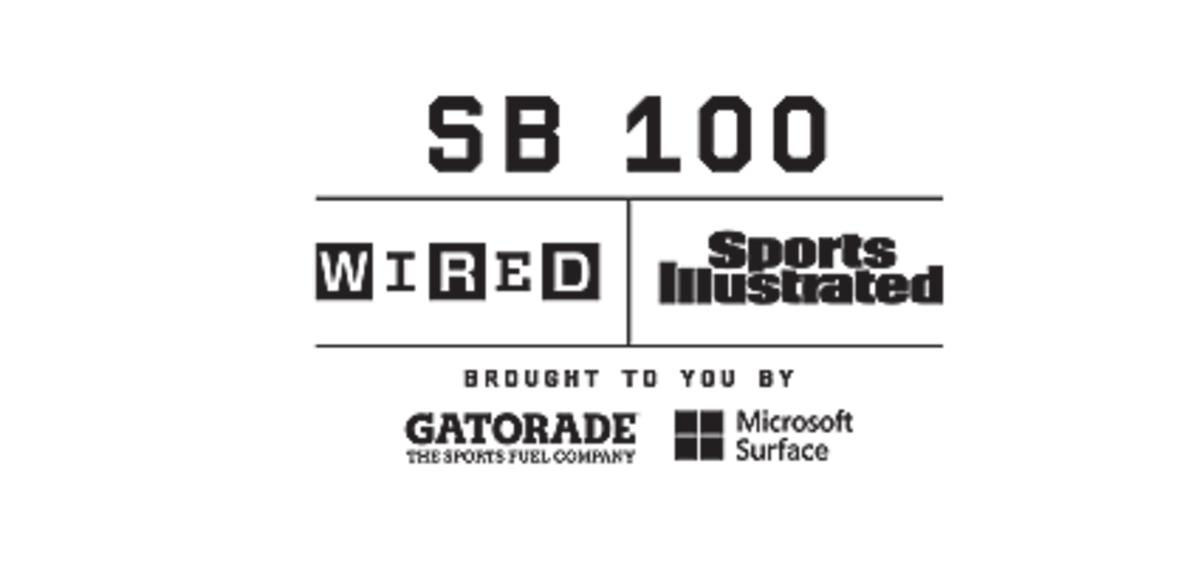The football of tomorrow will be connected—and undeflatable

By Erik Malinowski, WIRED
For a glimpse into football’s immediate future, you have to go back in time. Nestled among the silos and wheat fields and wind turbines that dot the rural northwest Ohio landscape, there’s a large white factory in the town of Ada. There are no sign markers to lead you there but drive toward the “ADA”-emblazoned water tower and, there in its shadow, you’ll come upon the Wilson Football Factory. It’s been in constant operation for 60 years with one primary purpose: manufacture official NFL game footballs. Every ball in every Super Bowl has come from here, crafted by the gnarled, taped-up hands of 120 or so local residents, who clock in at 7:30 a.m. and leave by 3:30 p.m. Many of the workers have been here 10, 20, even 30 years or more; one recent retirement party celebrated 48 years of service.
On a slow day, the workers pump out about 2,000 footballs, with the busiest times approaching 3,500 or more. The NFL may have a five-month season from opening day to the Super Bowl, but Wilson’s football-makers never stop. In all, about 700,000 footballs exit the Wilson warehouse doors every calendar year — about 70 percent of the global football market. “If they’re not perfect,” plant manager Dan Reigle, who’s been there 35 years, tells me, “they don’t go to the NFL.”
That’s the mindset with which Wilson manufactures not just “The Duke” (the official ball of the NFL) but myriad other balls as well, for several top FBS teams (including No. 1 Ohio State), the College Football Playoff semifinals and championship, every FCS school, nationally-ranked high schools, and so forth. And then there are the tweaks that Wilson can make to the balls.
Some have composite materials sewn in on the striping to increase tackiness and grip. Some are practice balls with the laces removed, to help quarterbacks improve their hand feel without the benefit of such an aid. Some swap in thicker and spongier laces geared to help smaller hands. Using a slightly lighter-colored hide can improve ball visibility, if so desired, and Wilson can treat the leather to vary moisture absorption. (Quarterbacks need this just right or else the balls become overly slick in the rain, making passing impossible.) There are endless ways to tweak a football so it performs differently, and Wilson has a team of R&D whizzes at its corporate headquarters in Chicago whose sole job is to dream this stuff up. They’ll send recommendations to the engineers in Ada, who then construct the balls to exact specifications.
Some have composite materials sewn in on the striping to increase tackiness and grip. Some are practice balls with the laces removed, to help quarterbacks improve their hand feel without the benefit of such an aid. There are endless ways to tweak a football so it performs differently, and Wilson has a team of R&D whizzes at its corporate headquarters in Chicago whose sole job is to dream this stuff up. They’ll send recommendations to the engineers in Ada, who then construct the balls to exact specifications.
Look for new entries in the Super Bowl 100 series, presented by Gatorade and Microsoft Surface, at SI.com/SB100 and Wired.com/sb100
Chapter 1, Oct. 7 TRAINING
Chapter 2, Oct. 28 EQUIPMENT
Chapter 3, Nov. 18 STADIUMS
Chapter 4, Dec. 9 CONCUSSIONS
Chapter 5, Dec. 16 MEDIA
Chapter 6, Dec. 30 VR
Chapter 7, Jan. 6 NFL IN SOCIETY
Chapter 8, Jan. 13 TRACKING
Chapter 9, Jan. 20 STRATEGY
Chapter 10, Jan. 27 SB 100
ROAD MAP TO
THE FUTURE
Of course, Wilson’s relationship with the NFL isn’t ironclad — they mutually re-up every few years — so the company is constantly trying to staying abreast of what’s coming down the pike: Need a football be made of cowhide? Could you construct a ball that doesn’t deflate? What about one that doesn’t wear out in the elements? These are speculative thoughts but they are also integral to the future of football. “I’d be lying if I said a lot of this is right around the corner”, says Kevin Murphy, Wilson’s head of all things football, “but I’d like to believe we’re going to be the ones to figure it out because that’s our business. We’re No. 1 by a long way, but that just makes you paranoid.”
The next wave of footballs is so close. For about five years or so, there’s been talk of chipping a football with some kind of Bluetooth- or RFID-transmitting device that can be tracked in real-time and let officials know, say, when a ball swallowed up in a scrum has crossed the plane of the goal line, even when obscured by all those 350-pound linemen. This has been one of the holy grails with football analytics for years. Baseball, soccer, and basketball have it easier because the game ball is rarely obscured from view, so they can rely on optical tracking (i.e. a camera being able to follow and calculate its movements). In the NFL, the football is often hidden so the only real way to crack this problem is to embed a chip in the ball that is self-powered and has a success rate somewhere on the order of 99.9 percent. Trying to determine a Super Bowl-deciding scoring play only to discover the ball’s gadgetry malfunctioned? That’d be bad for business.
But Wilson is close, as evinced by the ball being thrown around in its company parking lot on a recent afternoon. Randy Schreiner, who’s only been with the company about eight months, making him an extreme newbie around these parts, boots up the beta app that Wilson had built, slaps the ball in his hand to mimic it being “snapped” to the quarterback, and lets loose a 30-foot-long spiral. It looks perfect to me, but the iPad app shows an animated ball wobbling along a straight line and only gives the throw a 68 percent rating. It’s been a painstaking process to get this far — Wilson engineers have logged thousands of throws in the course of “teaching” the app what constitutes both a complete and incomplete pass — but this is proof of a concept that is inching ever closer to market. The idea is to unveil a few hundred of these balls to the public at the NFL Experience before Super Bowl 50 in Santa Clara and then start selling them in stores later in 2016. If all that goes well, Murphy says, you should see a connected football coming to the NFL in less than five years.
The NFL has been keen to get this done, but Wilson has had to basically create everything from scratch. The league came to them with the bulky impact sensors that are used in shoulder pads and said they wanted them in the ball, but they were heavy and had to be reduced down to the size of about six quarters stacked on top of each other. Then they had to decide where to put the transmitter. They found that smack in the core-middle of the football was best but they had to design a completely new bladder for this to happen, one that has a pouch in the middle to keep the chip and battery (which lasts about a year) stable and protected.
But while developing the technology has been a challenge — and Wilson owns all the IP, so the R&D expense will be worth it — the toughest part has been figuring how to incorporate the new materials into the traditional manufacturing process, and that’s something Wilson is still fine-tuning. That’s because the construction of an NFL football is something that’s remained largely unchanged since they opened the factory in 1955; many of the machines in use today are originals from back then. The biggest innovation is the automatic flatbed cutting machine that shears out the oblong ball panels with precision and automation. (For example, operators can tell it to avoid certain imperfections in the cowhide or even avoid the belly area altogether, since they don’t derive NFL footballs from that part of the cow.) But the process of making a ball is still largely human-powered, efficient, and specific. A lacer can plow through 900 balls a day. The four leather panels that comprise a ball must weigh around 6.5 ounces (or else you slice a wafer-thin layer off the underside of one of them). The ball-shaping machines requires a human to load and then wait 60 seconds per ball — 15 seconds for the air pressure to inflate the ball to 100 PSI, hold it there for 30 seconds, and then 15 seconds to deflate it down to its regulation 13-14 PSI — and then a team of quality-control workers must inspect each ball for imperfections. All of this is dependent not just on people but a decades-perfected process that can’t afford to be slowed down with extra steps and mechanical implementation.
But most critically, a chip-enabled ball must be just like any NFL ball, in look, feel, weight, and performance. To that end, Wilson has already been testing the ball for months with those who would know. One critical test came this past summer when they packed a sack of balls — both chipped and not — and had Seattle Seahawks quarterback Russell Wilson do a blind test and see if he could tell the difference. Some of the chipped balls he could identify, but he also missed some. The Wilson people were elated.
“We need to be able to look the competition committee in the eye and say, 'You won’t be able to tell it’s in the football,'” Murphy says. The company is already adept enough at chipping a basketball that the $200 Wilson X Connected Basketball went on sale to the public last month. Just as they’re doing with the football, this basketball has a radio chip and battery embedded inside the ball, allowing it to track all sorts of hoops-related activities.
Beyond the inevitable chipped ball to come in the next few years, Wilson keeps an eye to other future evolutions, some that will sound and feel downright futuristic at first thought. For example, as inextricable to the production process as leather may be, it's not inconceivable that a ball could be made entirely of synthetic composite materials so that it mimics the look and feel of authentic cowhide. Today, quarterbacks would easily be able to tell one from the other — from the ball's smell to its hand feel — but with advances in materials science, such experts won't be able to tell the difference.
Another breakthrough, though probably even further out, would be a bladder-less ball that is incapable of deflating and thus immune from any potential, uh, extracurricular tampering. Wilson has learned from working on the connected ball that there are ways to work with the guts of a ball that don't have any discernible impact on how it performs in a game setting. Now, it's possible that one day, that knowledge could extend to the development of some sort of internal chamber that liberates teams from worrying about maintaining inflation. Does anyone know how this might come about? Not a clue, but no one thinks it's beyond reality. This would be much more of a design and manufacturing issue, but nothing is off the table for Wilson’s engineers, who are keenly aware of their competitors, be they established and upstart.

